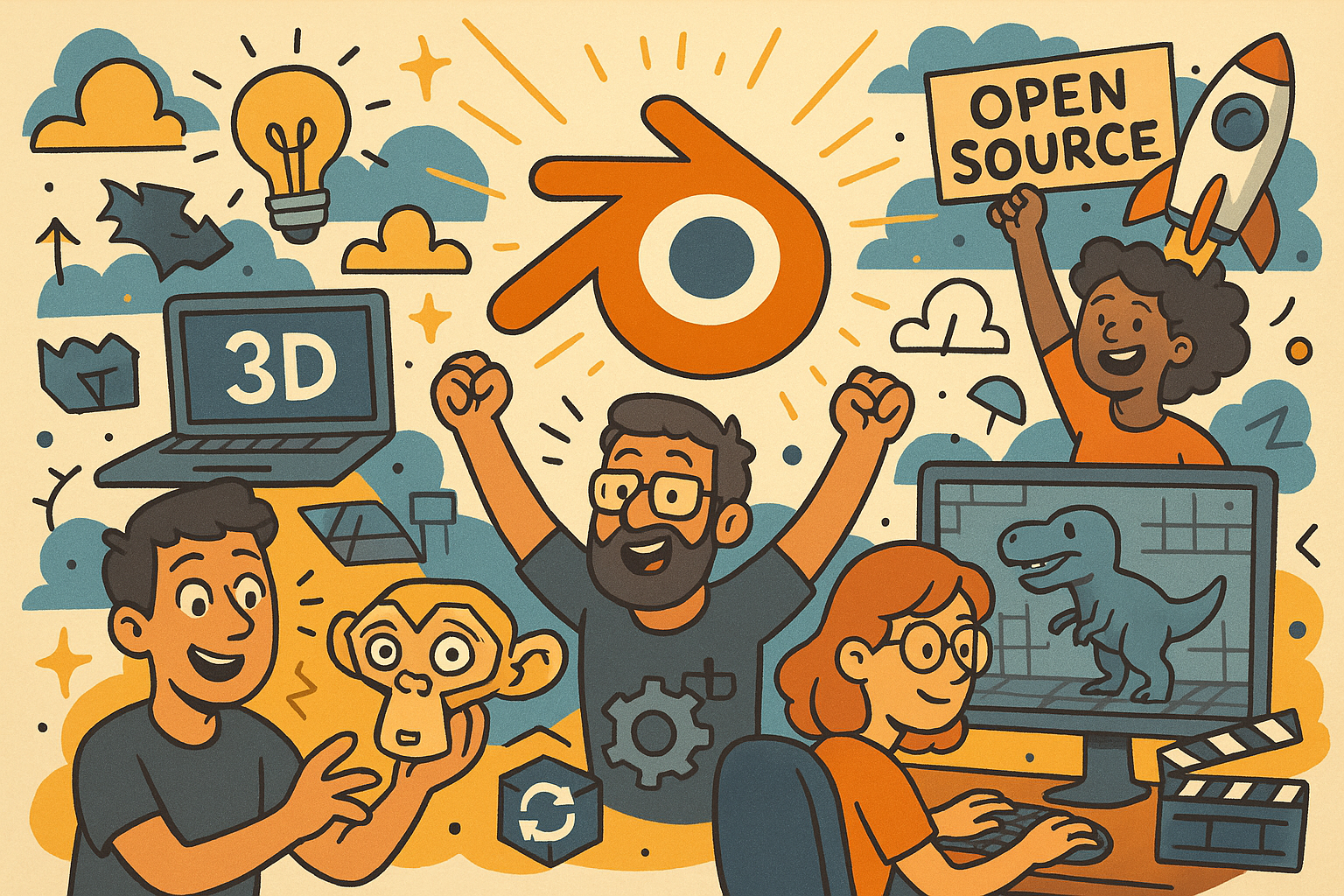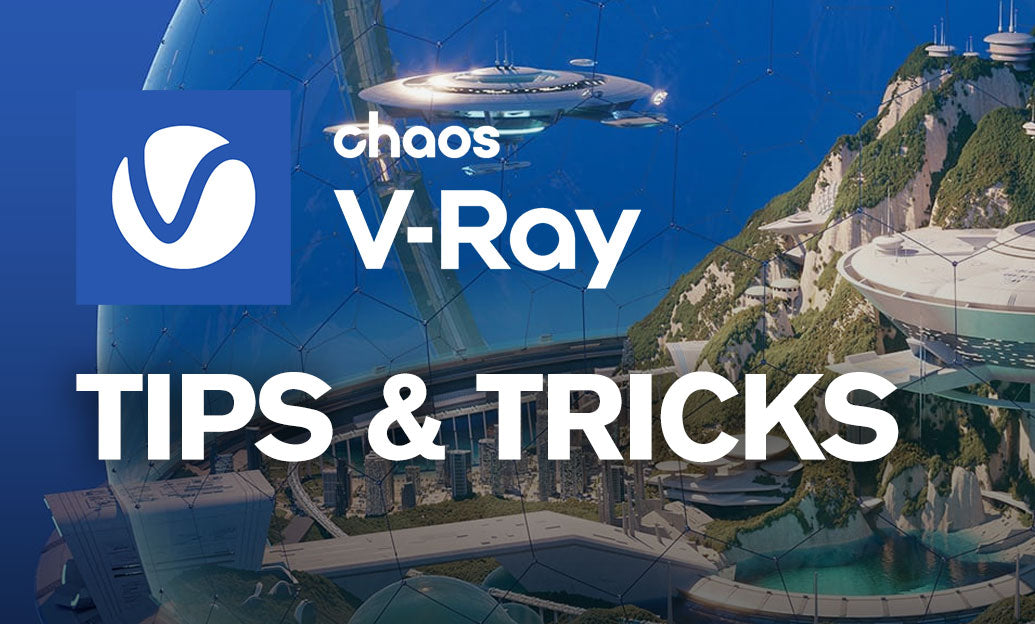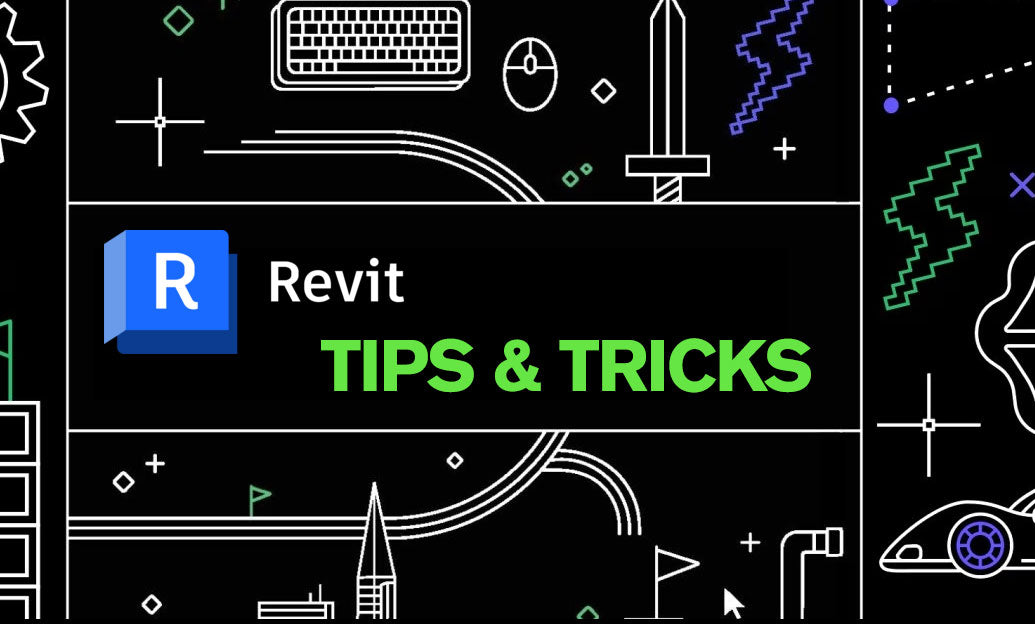Your Cart is Empty
Customer Testimonials
-
"Great customer service. The folks at Novedge were super helpful in navigating a somewhat complicated order including software upgrades and serial numbers in various stages of inactivity. They were friendly and helpful throughout the process.."
Ruben Ruckmark
"Quick & very helpful. We have been using Novedge for years and are very happy with their quick service when we need to make a purchase and excellent support resolving any issues."
Will Woodson
"Scott is the best. He reminds me about subscriptions dates, guides me in the correct direction for updates. He always responds promptly to me. He is literally the reason I continue to work with Novedge and will do so in the future."
Edward Mchugh
"Calvin Lok is “the man”. After my purchase of Sketchup 2021, he called me and provided step-by-step instructions to ease me through difficulties I was having with the setup of my new software."
Mike Borzage
Design Software History: Blender: The Open-Source Revolution in 3D Design and Its Impact on the Creative Industry
May 17, 2025 10 min read


Introduction and Historical Context
Blender’s inception, emerging from a modest Dutch animation studio in the mid-1990s, marked a revolutionary leap in the realm of 3D design. The very foundation of Blender was built on an open-source manifesto that challenged the established norms of proprietary design software. It represented an era when innovation was driven by a shared passion for creativity and democratization of technology. During its formative years, Blender’s developers strived to create a tool that was not only accessible to hobbyists and independent artists but was also robust enough to meet professional demands. Early adopters—comprising visionary designers and relentless programmers—embraced Blender’s pioneering spirit, rapidly expanding its user community through collaborative efforts that set the stage for its future evolution.
Historical Overview of Blender’s Inception
Blender’s early history is characterized by a determined response to the heavy domination of expensive, proprietary software systems. Some of the most notable attributes that distinguished Blender from its contemporaries were its commitment to remain free and accessible. This foundational openness allied Blender with the broader free software movement, which was gaining unprecedented momentum at the time. Key figures within the early computer graphics community recognized that the very essence of creativity in design needed to be unburdened by commercial licensing constraints. This created an environment where collaboration and rapid development became possible. In several design forums and development groups, enthusiasts and professional programmers hammered away on source code improvements, drafting critical features that would later become industry-standard functionalities. Through continuous refinement and persistent innovation, Blender steadily closed the gap between amateur artistic expression and high-end design production.
- Free Software Revolution: Challenging proprietary systems
- Collaborative Development: Fostering a community of innovators
- Early Adoption: Serving both hobbyists and professionals
Rise of the Open-Source Movement in 3D Design
The open-source movement in 3D design has a rich tapestry woven from the threads of technological empowerment and creative collaboration. During the nascent stages of Blender’s evolution, many influential developers and enthusiasts rallied around the vision of software that could be freely modified, distributed, and improved. This spirit of openness not only disrupted the traditional business model that relied heavily on expensive licenses and restrictive usage terms, but it also catalyzed a shift in industry narratives. The movement encouraged designers to contribute not only code but also new ideas that expanded Blender’s capabilities in ways that proprietary software companies had never considered. This environment enabled smooth integration of community feedback into software upgrades, thereby fostering an iterative development process that continuously refined the artistic and functional boundaries of 3D design. Prominent names in tech, as well as numerous grassroots contributors, played indispensable roles in infusing practical and often groundbreaking changes. The open-source model promoted the values of transparency, efficiency, and collective creativity, which remain integral to Blender’s ongoing impact on digital art and design. In this rich historical context, Blender not only symbolized a tool but also a global movement dedicated to redefining the future of design software.
Technological Advancements and Community Contributions
Blender’s evolution over the years is a testament to what can be achieved when a talented community and advanced programming converge to reimagine the possibilities in 3D design. Developers and enthusiasts alike celebrated numerous milestone releases that introduced features once thought exclusive to high-end proprietary software. Over the decades, the software’s interface, rendering engine, and modeling tools have undergone transformative changes driven by both visionary design and persistent user feedback. This journey has seen the incorporation of revolutionary algorithms, such as ray tracing for realistic lighting effects and procedural generation for texture creation. Essential to each of these technological milestones was the unwavering commitment from a diverse community that continually pushed the boundaries of what Blender could do. The resulting synergy between advanced software engineering and creative artistry not only improved the overall user experience but also allowed the platform to integrate emerging technologies seamlessly. During this period, an impressive array of plug-ins, add-ons, and customizations were developed—each contributing uniquely to Blender’s robust feature set.
Key Milestones in Blender’s Development
Throughout its development history, Blender has reached numerous technical and conceptual milestones which have redefined industry standards in digital design. One of the most critical turning points was the integration of advanced rendering techniques, turning Blender into a formidable visual effects tool. During this period of rapid evolution, important software releases brought state-of-the-art functionalities such as real-time rendering, physics simulation, and advanced shading models. With every new version, users witnessed significant enhancements that made it possible to simulate realistic behavior for light, material, and physical interactions in a virtual environment. Engineers and developers refined the algorithms that controlled these elements, drawing inspiration from mathematical models and computational geometry research, all while keeping the interface user-friendly and broadly accessible. Notable implementations include the development of more efficient mesh manipulation tools and the utilization of graphic processing unit (GPU) acceleration to handle complex visual effects simulations. Emphasizing the significance of these achievements, early releases of Blender also paved the way for a culture of experimentation. Innovators leveraged these groundbreaking updates to ideate solutions that further integrated computer graphics with emerging digital media tools.
- Advanced Rendering Techniques: Enhancements in real-time simulation and ray tracing
- Physics Simulation and Procedural Generation: Tools for realistic modeling
- GPU Acceleration: Performance improvements in handling complex computations
Role of Community-Driven Add-ons, Plug-ins, and Customizations
The dynamic ecosystem of Blender has thrived largely because of its diverse and dedicated community, which has played an integral role in supplementing the core software with innovative add-ons and plug-ins. From the very beginning, individuals and groups from around the world contributed their unique ideas, enhancing Blender’s core functionalities through these customizations. This collaborative effort led to the development of specialized tools that catered to various aspects of 3D design and animation. Some contributors engineered intuitive workflow enhancements that drastically reduced the time required for complex modeling tasks, while others focused on perfecting simulation tools that added layers of realism to digital scenes. Such innovations allowed Blender to seamlessly adapt to the changing landscapes of digital art and technology. In retrospect, the importance of a robust plug-in ecosystem in Blender can be attributed to:
- Enhanced Customizability: Tailoring the software to meet specific creative needs
- User-Driven Development: Incorporating real-world feedback for continuous improvement
- Expanded Functionality: Bridging gaps that the core software could not cover independently
Blender’s Impact on 3D Design and the Broader Industry
Blender’s arrival onto the 3D design scene has had profound ramifications for both the art community and the broader industries reliant on digital content creation. By breaking free from the exclusive corridors carved by high-priced proprietary software, Blender empowered a new generation of artists, animators, and designers, enabling everyone—from hobbyists to seasoned professionals—to experiment and create without intense financial burdens. This democratization of access to high-quality software has not only created opportunities for individual creativity, but it has also fostered a culture of sharing and innovation. Numerous professionals, even those working within established studios, began to rely on Blender as a complementary tool or as a stepping stone into the field of digital design. Its intuitive workflow and comprehensive set of features inspired industry experts to reconsider traditional pipelines and explore hybrid methodologies. This tacit revolution made it possible for creative talent from underrepresented resource-strapped regions to gain recognition by pursuing world-class projects and collaborations on equal footing with capabilities once confined to well-funded companies.
Democratization of 3D Design: Empowering All Levels of Creativity
One of the most significant contributions of Blender to the 3D design world is the radical shift it initiated in terms of accessibility. With Blender’s open-source approach, designers no longer had to rely solely on expensive licenses or proprietary solutions. This shift meant that numerous independent artists and small design teams could now explore advanced digital content creation. The availability of high-performance tools combined with free and open resources allowed individuals to undertake projects that were previously the domain of larger, well-resourced studios. Many budding designers found themselves drawn into the world of 3D modeling, animation, and visual effects after discovering Blender’s vast range of features. The platform’s inclusive philosophy opened up many possibilities, such as:
- Accessible Education: Learning 3D design through freely available tutorials and community forums
- Career Transitions: Transitioning from hobby design to professional involvement in digital arts
- Global Collaboration: Bringing together resources and talents from various cultural and geographic backgrounds
Comparison with Industry-Standard 3D Design Tools and Integration Across Fields
When comparing Blender with traditional, proprietary 3D design tools, the contrast in philosophy and accessibility becomes particularly striking. While industry leaders such as Autodesk with its Maya and 3ds Max product lines continue to dominate much of the high-end market, Blender emerged as a disruptive force that challenged notions of cost, licensing, and creative exclusivity. Industry-standard tools, though rich in features and backed by extensive technical support, often come with steep learning curves and financial commitments, thereby excluding a significant portion of potential innovators. In response to this, Blender offered an alternative that featured a rich set of functionalities comparable to its commercial counterparts, without the associated price tag. This radical difference in approach was pivotal in quickly turning Blender into the go-to tool for independent projects and educational programs alike.
- Cost Efficiency: Eliminating expensive licensing fees
- Flexible Integration: Accommodating workflows spanning entertainment, game development, and architectural visualization
- Community Engagement: Building a support network that facilitates continuous improvement
Conclusion
In reviewing Blender’s storied journey, it becomes evident that the open-source triumph of this dynamic tool has irrevocably altered the landscape of 3D design. Over decades of focused evolution, Blender has consistently challenged traditional norms by offering a feature-rich, accessible alternative to proprietary software. The combination of technological advancements, collaborative contributions, and a firm commitment to democratizing design tools has resonated across a spectrum of applications—from animation and game development to visual effects and architectural rendering. The legacy of Blender serves as a beacon of what can be achieved when innovation is placed in the hands of a global community united by a shared passion for creative expression and technological progress.
Blender’s Enduring Legacy and the Promise of the Future
The transformative influence of Blender is encapsulated not merely in its technological attributes, but in its philosophy of collective development and unrestricted creativity. Its journey reflects the potential of free, community-driven software to push industry boundaries and redefine standards previously thought unassailable. Enhanced by groundbreaking algorithms, robust add-on ecosystems, and a supportive network of contributors worldwide, Blender’s capabilities continue to expand, ensuring it remains at the forefront of digital art and design innovation. Looking ahead, future developments promise even deeper integration with emerging technologies such as virtual reality, artificial intelligence, and machine learning, further broadening the horizons for interactive design and immersive experiences. By marrying market responsiveness with visionary community input, Blender is set to continue its influential role, not just as a tool for design, but as a catalyst for a broader movement committed to shaping the future of creative software. The ongoing evolution of Blender is a clear affirmation that when passion, collaboration, and technology intersect, the boundaries of creative possibility are continuously redefined.
- Future Technologies: Anticipating VR, AI, and machine learning integration
- Community-Driven Innovations: Sustaining its relevance through active collaboration
- Global Impact: Influencing creative workflows across various industries
Reflections on Community Collaboration and Industry Transformation
The influence of Blender continues to ripple across the 3D design landscape, largely due to its unwavering emphasis on community collaboration. This spirit forms the heartbeat of Blender’s development—a pulse that resonates in every updated feature and innovative tool that emerges from its code repositories. The collaborative framework encourages participants to not only share their enhancements with one another, but also to push the boundaries of what is technically achievable, all while maintaining an open dialogue with industry professionals. The sense of ownership and unity that permeates Blender’s community has proven to be a formidable engine driving continuous innovation, establishing benchmarks that challenge long-standing industry leaders. As traditional software houses are compelled to adapt to a new era defined by open collaboration and user-centric development practices, Blender stands as a beacon of what the future might hold. The iterative process that has defined Blender’s lifecycle is not only a celebration of open-source principles, but also a practical demonstration of how incremental, community-driven improvements can ultimately outpace and outshine even the most well-funded proprietary alternatives. Today, as Blender moves confidently into the future, it continues to reinforce the idea that technological progress is best achieved through the inclusive contributions of a dedicated and passionate global community.
Also in Design News

Cinema 4D Tip: Cinema 4D: Export Multi‑Layer OpenEXR for AOV‑Driven ACES/OCIO Compositing
December 21, 2025 2 min read
Read More
V-Ray Tip: VFB Color Corrections Pass for Non-Destructive, Consistent Grading
December 21, 2025 2 min read
Read More
Revit Tip: Worksharing Display Modes — Visualize Ownership, Checkout Status, Model Updates, and Worksets
December 21, 2025 2 min read
Read MoreSubscribe
Sign up to get the latest on sales, new releases and more …


